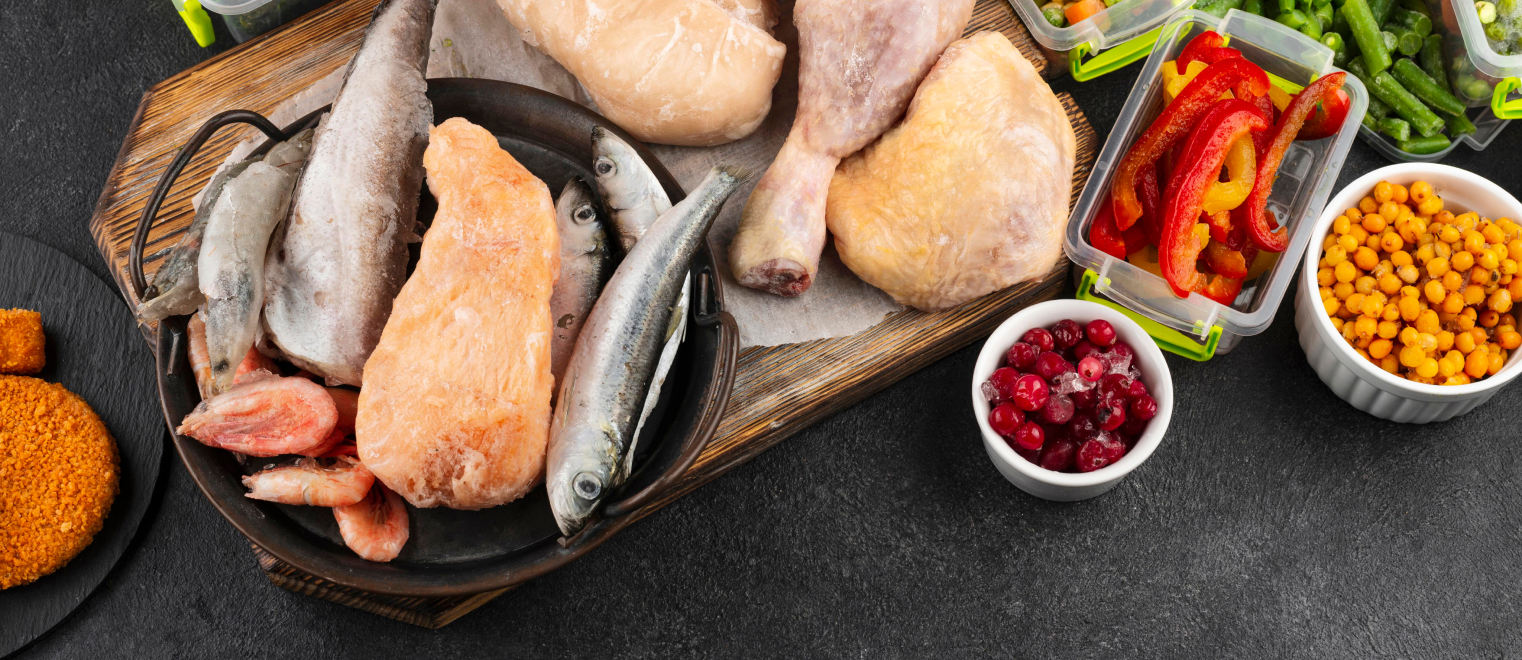
Guidelines for Shipping Chilled and Frozen Food
Navigating the challenges of shipping frozen or chilled food poses significant hurdles for eCommerce entrepreneurs. Key issues include:
- Extreme Temperatures: Fluctuations in weather, especially extreme heat or cold, can adversely affect frozen or chilled goods. Opting for express courier services over standard shipping helps prevent spoilage during transit.
- Humidity: High humidity, coupled with general heat, poses a threat to frozen foods. Including gel packs and other coolant materials becomes crucial to prevent items from melting during shipment.
- Spoilage: Improper packing, lacking insulated boxes and refrigeration, increases the risk of food spoilage before reaching the recipient.
Packing Frozen Foods:
Before shipping frozen items, proper packing is essential. Follow these key tips:
- Wrap Frozen Foods: Use watertight plastic bags, especially for items prone to leaks, and consider additional protection with bubble wrap.
- Choose Insulated Boxes: Include an insulated box for both the frozen item and the shipping container. This prevents movement during transit and maintains the item's cool temperature.
- Place Items in the Shipping Container: Put the insulated shipment inside the shipping box, ensuring it remains secure during transportation.
- Use Dry Ice or Gel Packs: Include dry ice for items meant to stay frozen and gel packs for those needing to stay cool but not frozen. Follow guidelines for using dry ice, considering ventilation and safety.
- Seal and Label: Seal the shipping box, ensuring sufficient coolant materials surround the frozen item. Attach any required labels, such as hazardous material stickers.
Best Practices for Shipping Frozen Food:
To overcome challenges, consider these best practices:
- Opt for Express Courier Services: Choose services like UPS® Next Day Air® or FedEx First Overnight to minimize transit time and reduce the risk of spoilage.
- Use Appropriate Packaging: Select foam insulating food containers, dry ice boxes, or cardboard boxes with insulated liners to maintain low temperatures.
- Avoid Cutting Corners: Use quality packaging materials, including gel packs, watertight plastic bags, and sturdy cardboard boxes, to prevent damage or spoilage.
- Ensure Proper Refrigeration: Utilize frozen gel packs and proper packing materials, such as bubble wrap, to secure shipments. Adequate dry ice and gel packs are essential, with proper ventilation for dry ice.
- Consider Shipping Insurance: Protect against losses with shipping insurance, especially when shipping valuable or delicate frozen items.
Shipping with USPS®, UPS®, and FedEx:
Each courier has specific guidelines for shipping frozen food:
- USPS®: Dry ice is acceptable, but containers must be leak proof with ventilation. Class 9 DOT labels and proper markings are required.
- UPS®: Use thin plastic liners, insulated foam containers, and consider dry ice or gel packs. Maintain shipment time under 30 hours.
- FedEx: Explore temperature-control solutions like FedEx Temp-Assure. Use insulated foam containers and follow guidelines for dry ice shipments.
Cost Considerations:
Shipping costs vary based on factors such as distance, duration, weight, and the type of frozen food. Expenses include materials like dry ice and packing gel. Estimating costs for a 5-pound shipment from New York to Los Angeles yields different rates for services like USPS® Priority Mail Express ($78.60), UPS® Next Day Air ($140.84), and FedEx First Overnight ($214.67). Evaluating courier services, transit times, and associated costs helps choose the most suitable option for shipping frozen goods.
All third-party names (including company and service names), graphics and logos used here are trademarks or registered trademarks of such third parties. Use of them here does not imply any affiliation with or endorsement by their respective holders.
